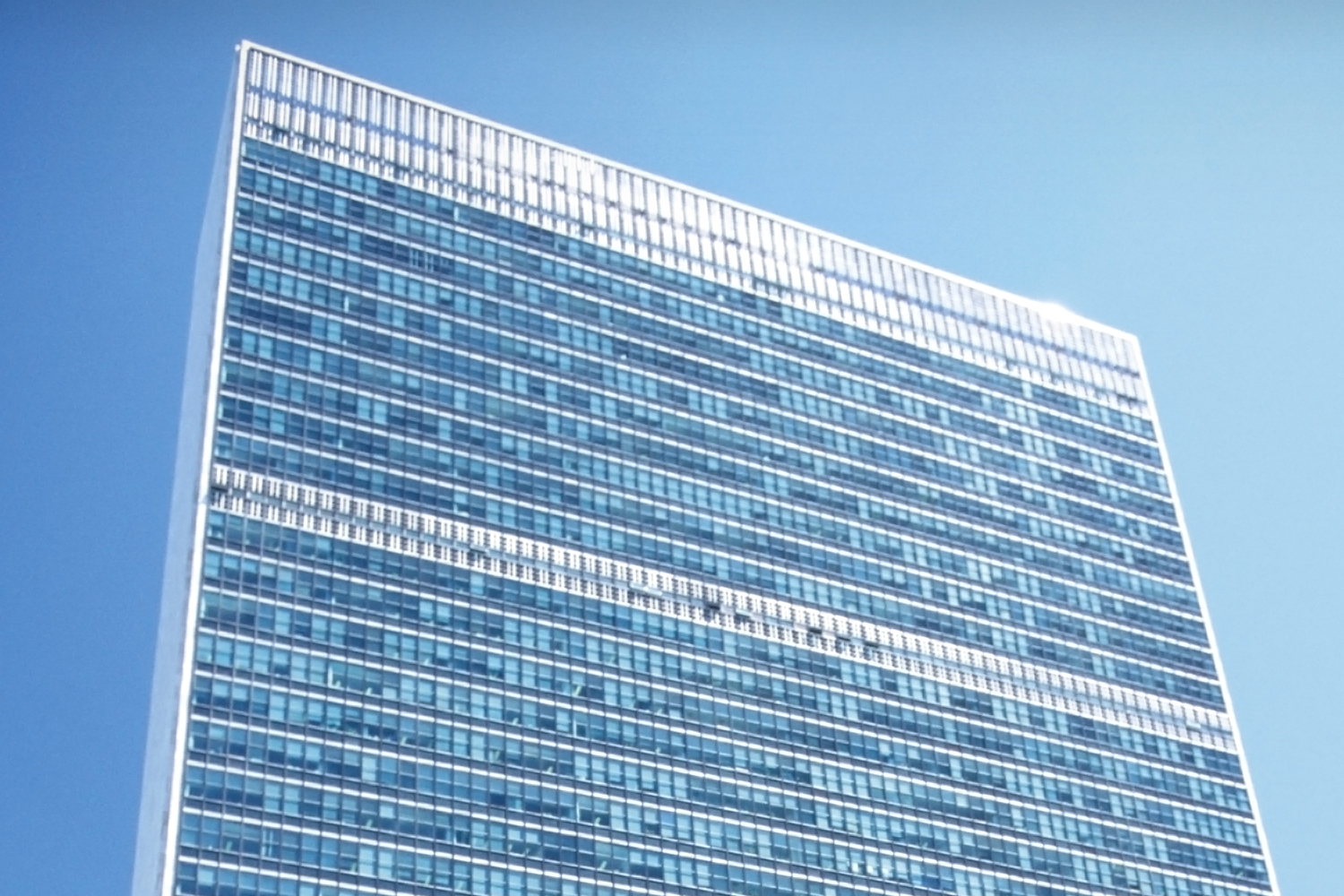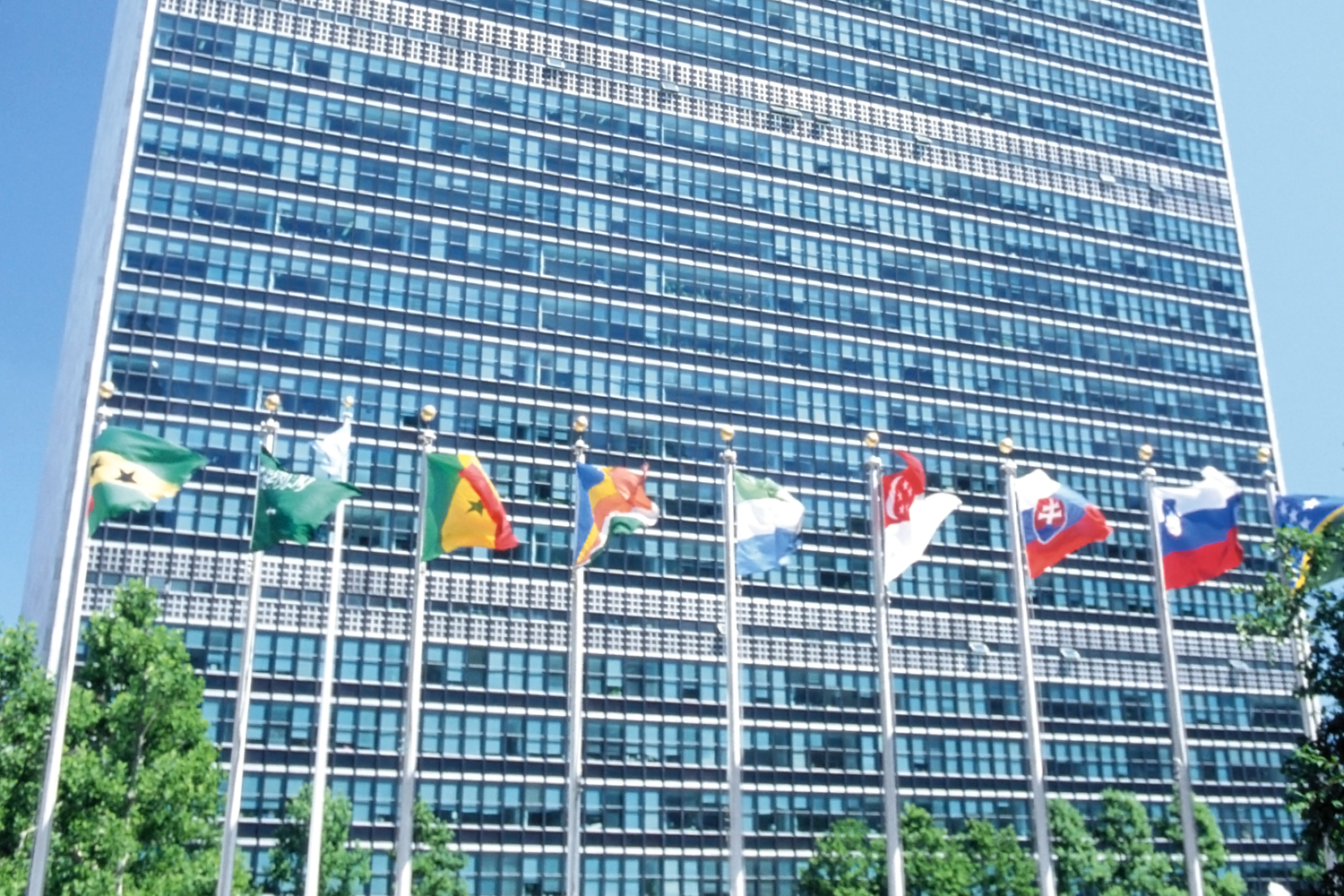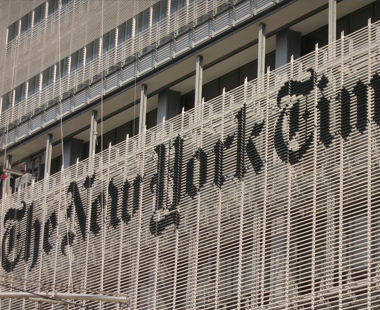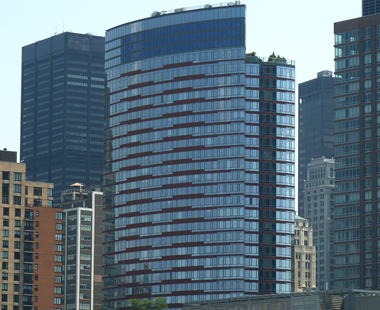Benson reclads the UN Secretariat building to improve thermal efficiency, increase blast resistance, and restore the aesthetic beauty of the historic Oscar Niemeyer and Le Corbusier collaboration.
UN Secretariat
New York City, New York
Originally completed in 1952, the 39-story U.N. Secretariat building is the centerpiece of the United Nations Headquarters in Manhattan, New York. The building’s design was an international collaboration between 10 architects, led by Oscar Niemeyer and Le Corbusier. The east and west façades were originally furnished with blue-green toned uninsulated Thermopane glass and included operable double-hung windows as well as louver systems on the mechanical floors.
Performance problems plagued the building soon after occupancy, especially due to solar heat gain and glare through the uninsulated single pane windows. To combat this effect, a reflective film was added to the inside surface of the vision glass. This helped reduce the solar load, but dramatically altered the Secretariat’s appearance due to the film bubbling, wrinkling, and peeling. The addition of the film also imposed a thermal stress on the annealed (non-heat treated) glass, causing it to crack. Various types of replacement glazing were used, creating an unsightly array of different hues throughout the east and west elevations.
Over the years, the once iconic building had become physically outdated, and serious renovation to the façade was required to meet current environmental standards as well as to restore the original luster merited by the crown jewel of the U.N. complex headquarters. When the U.N. decided it was time to upgrade the building and surrounding complex, a complete re-clad was chosen as the most effective option. R.A. Heintges & Associates were tasked with re-imagining the façade utilizing modern, energy efficient elements while maintaining the historical accuracy and aesthetic intent as closely as possible to Le Corbusier’s original design.
Benson worked in a concerted effort with the architects and consultants at Heintges to develop a state of the art curtain wall that maintained the historical congruity of the original design. Utilizing a thermally broken system with the added complexity of incorporating blast resistive elements within the frames, we were able to preserve the restrictive 8” depth of the wall. Sightlines in accord with the original double-hung windows were simulated by the addition of exterior trim pieces around the spandrel lights, creating the illusion of a recessed window. Pressure equalization was controlled throughout the wall.
Benson’s scope also included the storefront and entry systems, which provide prominent backdrops in the ceremonial approach of high profile assembly meetings. Oversized windows above the entry were supported with structural steel clad with stainless steel. Revolving and swing doors were designed to withstand blast loads, while duplicating their original 1950’s appearance. The overall result is a façade that is true to the original team of architects’ intent while providing a modern, energy efficient, blast resistant, pressure-equalized system.
FEATURES– |
MARKET SEGMENTGovernment |
REGIONEastern US |
YEAR COMPLETED2012 |
ARCHITECT(S)R.A. Heintges & Associates |
ARCHITECT OF RECORD– |
CONSTRUCTION MANAGERSkanska |
CLIENT/BUILDING OWNERThe United Nations Real Estate and Development Corporation |
CONSULTANT– |
SUSTAINABILITY RATING– |
FLOORS39-story |
GLASS TYPE1 1/4″ VNE6-63, 5/8″ argon |
ADDITIONAL DETAILS
Glass, revolving doors, blast reclad glass, aluminum screen
Benson reclads the UN Secretariat building to improve thermal efficiency, increase blast resistance, and restore the aesthetic beauty of the historic Oscar Niemeyer and Le Corbusier collaboration.
UN Secretariat
New York City, New York
Originally completed in 1952, the 39-story U.N. Secretariat building is the centerpiece of the United Nations Headquarters in Manhattan, New York. The building’s design was an international collaboration between 10 architects, led by Oscar Niemeyer and Le Corbusier. The east and west façades were originally furnished with blue-green toned uninsulated Thermopane glass, and included operable double-hung windows as well as louver systems on the mechanical floors.
Performance problems plagued the building soon after occupancy, especially due to solar heat gain and glare through the uninsulated single pane windows. To combat this effect, a reflective film was added to the inside surface of the vision glass. This helped reduce the solar load, but dramatically altered the Secretariat’s appearance due to the film bubbling, wrinkling, and peeling. The addition of the film also imposed a thermal stress on the annealed (non-heat treated) glass, causing it to crack. Various types of replacement glazing were used, creating an unsightly array of different hues throughout the east and west elevations.
Over the years, the once iconic building had become physically outdated, and serious renovation to the façade was required to meet current environmental standards as well as to restore the original luster merited by the crown jewel of the U.N. complex headquarters. When the U.N. decided it was time to upgrade the building and surrounding complex, a complete re-clad was chosen as the most effective option. R.A. Heintges & Associates were tasked with re-imagining the façade utilizing modern, energy efficient elements while maintaining the historical accuracy and aesthetic intent as closely as possible to Le Corbusier’s original design.
Benson worked in concerted effort with the architects and consultants at Heintges to develop a state of the art curtain wall that maintained the historical congruity of the original design. Utilizing a thermally broken system with the added complexity of incorporating blast resistive elements within the frames, we were able to preserve the restrictive 8” depth of the wall. Sightlines in accord with the original double-hung windows were simulated by the addition of exterior trim pieces around the spandrel lights, creating the illusion of a recessed window. Pressure equalization was controlled throughout the wall.
Benson’s scope also included the storefront and entry systems, which provide prominent backdrops in the ceremonial approach of high profile assembly meetings. Oversized windows above the entry were supported with structural steel clad with stainless steel. Revolving and swing doors were designed to withstand blast loads, while duplicating their original 1950’s appearance. The overall result is a façade that is true to the original team of architects’ intent, while providing a modern, energy efficient, blast resistant, pressure-equalized system.
FEATURES– |
MARKET SEGMENTGovernment |
REGIONEastern US |
YEAR COMPLETED2012 |
ARCHITECT(S)R.A. Heintges & Associates |
ARCHITECT OF RECORD– |
CONSTRUCTION MANAGERSkanska |
CLIENT/BUILDING OWNERThe United Nations Real Estate and Development Corporation |
CONSULTANT– |
SUSTAINABILITY RATING– |
FLOORS39-story |
GLASS TYPE1 1/4″ VNE6-63, 5/8″ argon |
ADDITIONAL DETAILS
Glass, revolving doors, blast reclad glass, aluminum screen






